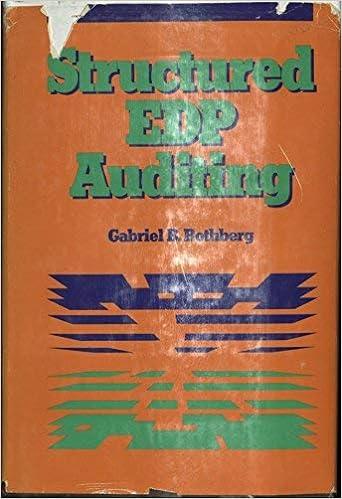Question
Instant Dinners, Inc. (IDI), is an established manufacturer of microwavable frozen foods. Leland Forrest is a member of the planning and analysis staff. Forrest has
Instant Dinners, Inc. (IDI), is an established manufacturer of microwavable frozen foods. Leland Forrest is a member of the planning and analysis staff. Forrest has been asked by Bill Rolland, CFO of IDI, to prepare a net-present-value analysis for a proposal capital equipment expenditure that should improve the profitability of the western plant. This analysis will be given to the board of directors for approval. Several years ago, as director of planning and analysis at IDI, Rolland was instrumental in convincing the board to open the western plant. However, recent competitive pressures have forced all of IDIs manufacturing division to consider alternatives to improve their market position. To Rollands dismay, the western plant may be sold in the near future unless significant improvement in cost control and production efficiency are achieved.
Westerns production manager, an old friend of Rolland, has submitted a proposal for the acquisition of an automated-material-handling system. Rolland is anxious to have this proposal approved as it will ensure the continuation of the western plant and preserve his friends position. The plan calls for the replacement of a number of forklift trucks and operators with a computer-controlled conveyor belt system that feed directly into the refrigeration units. This automation would eliminate the need for a number of material handlers and increase the output capacity of the plant. Rolland has given this proposal to Forrest and instructed him to use the following information to prepare the analysis.
| Automated-Material-Handling System Projections | ||
| Project Useful Life | 10 years | |
| Purchase and installation of equipment | 4,500,000 | |
| Increased working capital needed* | 1,000,000 | |
| Increased annual operating costs (exclusive of depreciation) | 200,000 | |
| Equipment repairs to maintain production efficiency (end of year 5) | 800,000 | |
| Increase in annual sales revenue | 700,000 | |
| Reduction in annual manufacturing costs | 500,000 | |
| Reduction in annual maintenance costs | 300,000 | |
| Estimated salvage value of conveyor belt system | 850,000 | |
| *The working capital will be released at the end of the 10-year useful life of the conveyor belt system. | ||
The forklift trucks have a net book value of $500,000 with a remaining useful life of five years and no salvage value for depreciation purposes. If the conveyor belt system is purchased now, these trucks will be sold for $100,000. IDI has a 40% tax rate, has chosen the straight-line depreciation method for both book and tax purposes, and uses a 12% discount rate. For the purpose of analysis, all tax effects and cash flows from the equipment acquisition and disposal are considered to occur at the time of the transaction while those from operations are considered to occur at the end of each year.
When Forrest completed his initial analysis, the proposed project appeared quite healthy. However, after investigating equipment similar to that proposed, Forrest discovered that the estimated salvage value of $850,ooo was very optimistic. Information provided by several vendors estimates this value to be only $100,000. Forrest also discovered that industry trade publications considered eight years to be the maximum life of similar conveyor belt systems. As a result, Forrest prepared a second analysis based on this new information. When Rolland saw the second analysis, he told Forrest to discard this revised material, warned him not to discss the new estimate with anyone at IDI, and ordered him not to present any of this information to the board of directors.
PLEASE ANSWE THE FOLLOWING THREE QUESTIONS BASED ON THE INFO PROVIDED:
1) Prepare a net-present-value analysis for the purchase and installation of the material-handling system using the revised estimates obtained by Leland Forrest (ignore the half-year convention. Assume annual straight-line depreciation of $562,500, which is $4,500,000/8).
2) Explain how Leland Forrest, a management accountant, should evaluate Bill Rollands directives to repress the revised analysis. Take into consideration the specific ethical standards of competence, confidentiality, integrity, and objectivity.
3) Identify some steps Leland Forrest could take to resolve this situation.
Step by Step Solution
There are 3 Steps involved in it
Step: 1

Get Instant Access to Expert-Tailored Solutions
See step-by-step solutions with expert insights and AI powered tools for academic success
Step: 2

Step: 3

Ace Your Homework with AI
Get the answers you need in no time with our AI-driven, step-by-step assistance
Get Started


